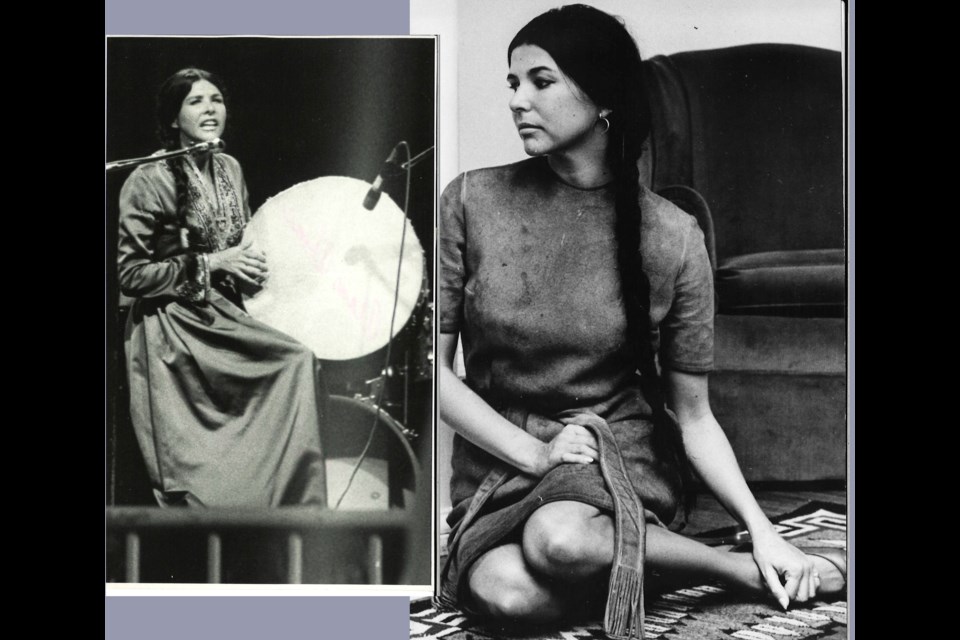From the archives of the Sault Ste. Marie Public Library:
Autumn has long been the time of film and cultural festivals, such as the recent Toronto International Film Festival or a little closer to home, the Algoma Fall Festival.
Autumn 2021 is also the first year that Canada has held a National Day of Truth and Reconciliation in response to the recommendations of the Truth and Reconciliation Commission’s 94 Calls to Action.
You may be wondering how these events relate to life here in Sault Ste. Marie, originally known as Bawating. Well, at the heart of all of these events is storytelling.
With the sun having just set on the first National Day of Truth and Reconciliation and Orange Shirt Day, which both focus on the true stories of Residential School Survivors, join me on an interesting walk down some local historical lanes while I share some career highlights of one of this country’s most esteemed and iconic storytellers.
Alanis Obomsawin (a-la-niece o-bomb-sa-win) is an Indigenous storyteller who has used song, the spoken word and film to create an invaluable body of work in her 89 years of life. Fortunately, the people of this area have had occasion to see her perform locally, many times over the years.
In August of 1964, Dr. Alan Gordon and friends organized the first Algoma Folk Festival which featured singers Alanis Obomsawin and a young Gordon Lightfoot, just to name a few.
While the festival, held at Bellevue Park, only drew a moderate audience, singer Bonnie Dobson who also performed that weekend, is quoted as saying, “I remember watching Alanis Obomsawin perform and she was absolutely wonderful”.
Obomsawin was known to perform with the sole accompaniment of a hand drum or rattle as she sang the traditional songs telling the stories of the Abenaki people, in an effort to preserve and share her culture. She also attended the National Indian Conference at Garden River while in the area.
During the centennial year of 1967, a play entitled Arrow To The Moon was presented at the Sault Ste. Marie Armoury theatre. Arrow To The Moon was a celebratory project spearheaded by Cree students staying in Sault Ste. Marie, three of whom lived with Judge Ray Stortini and his family in what was once known as the Templeton Home on Herrick Street. Stortini writes that the students wanted to participate in the Centennial festivities and thus, with a collaborative effort of the students as the actors and locals who wrote the play, including Act Three which was written by the Judge himself, Arrow To The Moon was created.
The performance debuted on May 6, 1967.
“There was no script for her (Alanis Obomsawin)," Stortini noted. "If she was moved by something in the play she would play her drum and start to sing an appropriate native song between acts and during her narration. The play… was an outstanding success.”
To narrate sans script, add lib intuitively and incorporate song as appropriate shows just how much of a consummate artist and storyteller Alanis Obomsawin truly is.
By the time the people of Algoma next see Alanis perform locally in 1988, she has become a well-established filmmaker with the National Film Board of Canada for 18 years. In January of ’88 a series of three, free concerts were co-sponsored by Algoma and Lake Superior State Universities in which Obomsawin performed two evening and one morning concert.
is quoted as saying of her performance that
“She doesn’t stay in one form of expression," said Professor Don Jackson of Algoma University. "Her idea is to provide a bridge for native people to communicate with each other as well as other groups … she is a colourful woman and a very talented person.”
While in the area, Obomsawin also presented a cross-cultural workshop for educators, agency and band personnel working in the native context.
The one common theme that characterizes Alanis’ performances is that they are routinely matched with some form of educational component for the community she is visiting. She has often said in interviews that education is her main goal. Whether in film, song or discussion, Alanis Obomsawin has been a champion for telling the truth of Indigenous peoples, be it the beautiful culture or the need for social justice and equality.
While the current pandemic has limited Alanis Obomsawin’s travel and performance over the past 18 months it has certainly not impeded her peers’ acknowledgement of her fine artistic abilities.
Most recently, on Oct. 6, 2021, she has been acknowledged and honoured with the Glenn Gould Prize which is awarded to an individual for a unique lifetime contribution that has enriched the human condition through the arts.
Alanis Obomsawin, having created 54 films in 54 years, has indeed achieved a lifetime contribution to the sharing of story and education from coast to coast to coast. In her artful storytelling, she has remained true to her purpose.
“My main interest all my life has been education because that’s where you develop yourself, where you learn to hate, or to love,” Obomsawin said.
Note: Visit this website to view the works of Ms. Obomsawin or stop by the Centennial James L. McIntyre Library to read our copy of Arrow To The Moon.
Each week, the Sault Ste. Marie Public Library and its Archives provides SooToday readers with a glimpse of the city’s past.
Find out more of what the Public Library has to offer at www.ssmpl.ca and look for more Remember This? columns here
